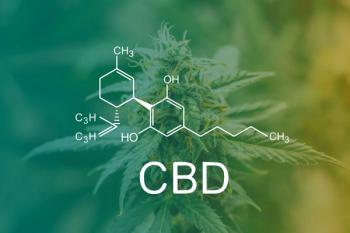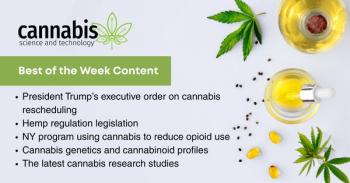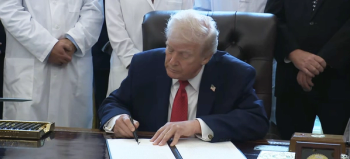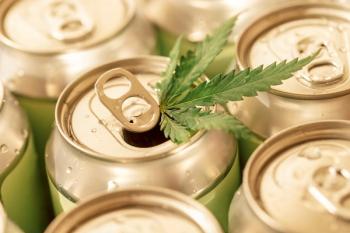
Cannabis Science and Technology
- March 2021
- Volume 4
- Issue 2
Hemp Testing Insanity III: This Time It’s the USDA!

This column discusses where the USDA went wrong in their final rule regarding hemp and how the author thinks it can be fixed.
The United States Department of Agriculture (USDA) recently released their final rule entitled “Establishment of a Domestic Hemp Production Program" (1). This was preceded by an Interim Final Rule (IFR) (2), all in support of the 2018 Farm Bill establishing the legality of hemp production in the United States (3). In regards to hemp testing, in conjunction with the final rule the USDA issued a “Laboratory Testing Guidelines for U.S. Domestic Hemp Production Program” (4).
The Final Rule is the result of nationwide hearings and more than 5000 comments submitted by hemp industry stakeholders. My own involvement is I held in person meetings with the head of the USDA Hemp Program, and his technical staff, and submitted a number of comments based on my own discussion of hemp testing problems and solutions from earlier columns (5–8). Given the number of comments, the passion of the commenters, and the high scientific level of many of the comments, I was hopeful that the final rule would establish guidelines for a robust and effective hemp testing program based on sound science. After perusing the ponderous 301 page tome that is the final rule (I can’t quote page numbers because the PDF issued did not include them), I am bitterly disappointed. Rather than listening to the scientific community and important industry stakeholders, the USDA doubled down on most of the mistakes promulgated in the IFR. This column, and perhaps future ones, will point out where I think they went wrong and how to fix it.
No Establishment of an Accuracy Standard
The Final Rule keeps the definition of an “acceptable hemp THC Level” (2). This quantity is calculated by taking 0.3% total tetrahydrocannabinol (THC) and adding the margin of error for a given method. For example, if the margin of error for a given laboratory’s determination of total THC in dried ground hemp is ±0.05%, the acceptable hemp THC level for that laboratory is 0.35%. Any hemp sample tested by this laboratory whose measured total THC level is 0.35% or lower would be legal (2).
The establishment of an acceptable hemp THC level is good because it takes margin of error into account. However, the Final Rule does not establish the minimum margin of error a method must have to be considered appropriate for determining legality. For example, if a laboratory develops a method with a margin of error of ±0.1% total THC, samples with readings of 0.4% or less as measured by this laboratory are legal based on the USDA’s formula. This puts us in the absurd situation that if the true total THC value for a sample is 0.37%, one of these laboratories would say the sample is non-compliant and the other would say the sample is compliant. This is absurd.
Leaving out an accuracy standard was not an oversight. The USDA defends its actions by stating a specific accuracy number would dissuade laboratories from developing more accurate methods. The federal government promulgates accuracy specifications for many analytical methods, such as allowed pesticide residue in foods. Why can't the USDA specify an accuracy standard for the determination of total THC in hemp? Regardless of what the law might say, people in this industry laboratory shop. Laboratories with less accurate methods will pass more samples than laboratories with more accurate methods. This will not go unnoticed by the industry, and laboratories with a reputation for passing samples will garner more business than laboratories with better methods. Heck, why not develop a method with a total THC accuracy of ±1% and pass all tested hemp samples! The owner of that laboratory will be laughing all the way to the bank, and the Final Rule as written has no teeth to shut down such a laboratory. The Final Rule does the opposite of what was intended. It incentivizes laboratories to keep using inaccurate methods and provides no reward for increasing accuracy.
Chromatography Gets a Free Pass
The USDA made a mistake by calling out specific analytical methods as being acceptable while excluding others. By endorsing specific technologies, the USDA is favoring some instrument companies over others, which goes against the government’s job of being neutral in cases like these.
To evaluate an analytical method as fit for purpose, the criteria of accuracy, speed, cost, and the ability to perform representative sampling should be considered, as I discussed in a previous column (9) and as illustrated in Figure 1.
Given these criteria, the reality is that no one analytical method analyzes all things in all samples well. As I like to say when I teach analytical chemistry training courses, and Star Trek fans may be the only ones who get this reference, the Tricorder will not be invented for another 300 years (10). Because there is no one size fits all analytical method, our laboratories are full of spectrometers, chromatographs, and other instruments. Analytical chemists need the right tool for the right job, hence the need for a large toolbox.
With these facts in mind, we must wonder why the USDA has limited the size of our toolbox for hemp total THC determination. The Final Rule calls out gas chromatography (GC) and high performance liquid chromatography (HPLC) as being acceptable methods, while any other potency measurement technology must jump through hoops to be accepted (1). No justification was given for the free pass given to GC and HPLC. No peer-reviewed papers were cited supporting the automatic acceptance of these technologies. Why?
To the best of my knowledge, the only two technologies available with the ability to accurately measure 0.3% total THC in dried hemp are chromatography (12) and infrared (IR) spectroscopy (9). Because of this, in the following discussion I will pose IR spectroscopy as the only alternative to chromatography in this application. If any readers are aware of other technologies up to this task, whose accuracy is supported by peer-reviewed data, please let me know. Given that the use of IR spectroscopy to analyze hemp is supported by peer-reviewed data (9), why didn't the USDA give this technique a free pass? I hope it is not because the USDA thinks IR spectroscopy isn't quantitative.
If I had a dollar for every experienced chromatographer who told me that IR is not quantitative I would be a rich man. IR uses the same phenomenon, the relationship between the amount of light absorbed and concentration known as Beer’s Law (9,11), as the ultraviolet-visible (UV-vis) detection scheme that HPLC systems use to analyze for cannabinoids in hemp and marijuana (12). In the derivation of Beer’s Law (11) no assumptions are made as to the wavelength of light being absorbed. This means in principle the relationship between absorbance and concentration works at any wavelength. Why then would anyone who routinely uses Beer's Law for quantitation with UV-vis light claim that using IR light is not quantitative? This is a decidedly unscientific stance.
Another falsehood I hear about the quantitative ability of IR spectroscopy is that it only works on spectrally isolated peaks. This was true back in the 1970s but is not true today. Since the 1980s advances in the field of chemometrics, the application of statistical algorithms to chemical data, now mean that even spectra of complex mixtures can be quantified (11,13–17). For example, IR spectroscopy is used to provide quantitative analyses of agricultural products such as hay, grain, forage, fabrics, pharmaceuticals, polymers, dairy products, petrochemicals, beverages, and wood (13,17). Work by myself and others has clearly shown that IR spectroscopy provides quantitative information on MCT oil tinctures (18), cannabis distillates (19), extracts (20), and cannabis plant material (21–24). The proven accuracy of IR spectroscopy for the determination of total THC in dried, ground, hemp is ±0.04% (9,21,24), which is more than sufficient to determine whether a sample is above or below the 0.3% legal limit.
What justification then does the USDA have for excluding IR spectroscopy, or any other scientifically proven technique, as being unacceptable? Is it because chromatography is widely used in pharmaceutical and forensic laboratories? So is IR spectroscopy (13,17,25). Is it because there are Association of Official Analytical Chemists (AOAC) certified methods for chromatography? There are for IR spectroscopy as well (26). As an analytical technique, spectroscopy is not any more or less trusted than chromatography. The proper analytical chemistry approach then is to use the right tool for the right job. Sometimes that will be spectroscopy, sometimes that will be chromatography, and sometimes it will be both. By favoring some techniques over others, the USDA is doing us all a disservice by shrinking our analytical chemistry toolbox.
In its blind acceptance of GC and HPLC the USDA has completely ignored the disadvantages of these techniques for hemp analysis. My own work and that of others has clearly shown that inter-laboratory variation is a big problem in cannabis analysis (19,27,28). The problem is caused in part by the lack of standard methods and matrix reference materials (27,28). Solutions have been proposed (28), but have not yet been implemented industry wide. My own experience is that no two chromatographs in this industry give the same results on the same samples.
Given what we know, it’s not enough to say “use chromatography” and assume that solves the problem. Whose method should one use? There are a number of published methods (12,29,30) and a number of unpublished methods in use. Additionally, standards organizations such as the AOAC (31), American Society for Testing Materials (32), and the United States Herbal Pharmacepoeia (33) are all developing chromatographic cannabis potency methods. I guarantee that these methods will produce different numbers on the same samples. How then can we use chromatography to determine the legality of hemp samples?
To truly sample a hemp field in a representative manner requires analyzing tens or even hundreds of samples depending upon the size of a plot (5). Given the slowness and expense of chromatography, it is not up to this task. Whereas, it has been shown that IR spectroscopy can accurately analyze for total THC in hemp in 2 min with little sample preparation (21,24). At minimum, IR spectroscopy should be used as a screening tool to weed out legal samples so that the time and expense of chromatographic analyses is only invested into samples that are more than likely illegal.
What the USDA Should Have Done
During my career in cannabis analysis I have had the opportunity to advise the state of California and the USDA on how to write cannabis testing regulations—and in both cases they ignored my advice. My ignored advice was to never call out a specific technology, but simply state what the accuracy for the determination of an analyte in a matrix needs to be, and then state what set of matrix reference materials will be used to determine that accuracy. Given that we need to measure 0.3% total THC, promulgating an accuracy standard of ±0.05% is reasonable in that it will provide an accurate picture of a sample, and is achievable with existing technology (12,21,24,29,30).
What standard reference samples should we use? Under normal circumstances we would look to the National Institutes of Standards and Technology (NIST) for these. However, while NIST is busily working to come up with hemp standards (34), they have not yet issued standard hemp matrix reference materials. Fortunately, as I have pointed out in a previous column (6), the University of Kentucky has issued a set of four hemp standard reference materials that have been analyzed by 60+ laboratories across the country (35). The certificates of analysis that come with these samples contain the average of the weight percent total THC measured by these laboratories. This is, as far as I know, the best set of hemp standard reference samples available to the industry. The USDA should require use of these samples as industry standards until NIST comes out with their own standards. Let me be bold enough then to suggest the USDA rule on hemp testing be rewritten quite simply as follows:
“The accuracy of the determination of total THC in dried, ground hemp samples for any method used to ascertain sample compliance with the law shall be ±0.05 weight percent as determined by comparison to the total THC in the standard reference sample set issued by the University of Kentucky (UKY). Accuracy shall be determined as the Standard Error of Prediction between the total THC values as stated on the UKY certificates of analysis and the values as measured by the proposed method. If and when the National Institute of Standards and Technology issues hemp matrix reference materials, the accuracy of any method used for compliance testing shall be determined with these samples.”
One simple paragraph, putting the onus on hemp analyzer manufacturers to prove their equipment works with no bias for or against any specific technology or instrument company. This one paragraph could have spared the dozens of pages in the final rule trying to justify what was done.
In my opinion, problems with the USDA’s suggested testing regimen, along with other problems in the final rule such as the proposed sampling regimen, will not help establish a healthy domestic hemp industry but will damage it.
Conclusions
The new USDA final rule for hemp testing does not include an accuracy standard, which encourages the development of inaccurate methods. By biasing the rule towards chromatography and ignoring other scientifically proven methods, the USDA condemns us to slow, expensive testing that will not provide enough sample throughput for true representative sampling. The answer to the problem is to specify a required accuracy level for the determination of total THC in dried, ground hemp, state the reference sample set to use in this determination, and then let the testing industry do its best to develop the appropriate methods.
References
Federalregister.gov/d/2021-00967 .https://www.federalregister.gov/documents/2019/10/31/2019-23749/establishment-of-a-domestic-hemp-production-program .- 115th United States Congress, Senate Bill S.2667,” Hemp Farming Act of 2018”.
Hemp Testing Guidelines Issued January 15, 2021 (usda.gov) .- B.C. Smith, Cannabis Science and Technology 3(6), 10-13 (2020).
- B.C. Smith, Cannabis Science and Technology 3(5), 10-13 (2020).
- B.C. Smith, Cannabis Science and Technology 3(3), 12–15 (2020).
- B.C. Smith, Cannabis Science and Technology 2(5), 10-13 (2019).
- B.C. Smith, Cannabis Science and Technology 2(6), 10-14 (2019).
Tricorder - Wikipedia .- B.C. Smith, Quantitative Spectroscopy: Theory and Practice (Elsevier, Boston, Massachusetts, 2002).
- M.W. Giese, M.A. Lewis, L.Giese, and K.M. Smith, Journal of AOAC International 98(6), 1503 (2015).
- D. Burns and E. Ciurczak, Eds, Handbook of Near-Infrared Analysis, (Marcel Dekker, New York, 1992).
- J. Workman and L. Weyer, Practical Guide to Interpretive Near-Infrared Spectroscopy, (CRC Press, Boca Raton, Florida, 2008).
- R. Kramer, Chemometric Techniques for Quantitative Analysis, (Marcel Dekker, New York, 1998).
- K. Beebe, R. Pell, and M.B. Seasholtz, Chemometrics: A Practical Guide, (Wiley, New York, 1998).
- J.M. Chalmers, Spectroscopy in Process Analysis, (CRC Press, Boca Raton, Florida, 2000).
- B.C. Smith, C.A. Fucetola, K. Ehrmantraut, and T. Hagan, Terpenes and Testing, Sept./Oct. 2020, pgs. 19-24.
- B.C. Smith, P. Lessard, and R. Pearson, Cannabis Science and Technology 2(1), 48 (2019).
- B.C. Smith, Terpenes and Testing, Jan.-Feb. 2018., Pg. 32
- B.C. Smith, Cannabis Science and Technology 3(6), 24-38 (2020).
- C. Sánchez-Carnerero Callado, N. Núñez-Sánchez, S. Casano, and C. Ferreiro-Veraa, Talanta 190, 147–157 (2018).
- B.C. Smith, M. Lewis, and J. Mendez, “Optimization of Cannabis Grows Using Fourier Transform Mid-Infrared Spectroscopy,” PerkinElmer Application Note (2016)
- B.C. Smith, Cannabis Science and Technology 2(6), 28-33 (2019)
- B.C. Smith, Fundamentals of Fourier Transform Infrared Spectroscopy, (CRC Press, Boca Raton, Florida, 2011).
OMA (aoac.org) .- B.C. Smith, Cannabis Science and Technology 2(2), 12-17 (2019).
- B.C. Smith, Cannabis Science and Technology 2(3), 10-14 (2019).
- A. Hazekamp, A. Peltenburg, R. Verpoorte, and C. Giroud, J. Liquid Chrom. & Related Techniques 28, 2361 (2005).
- B. De Backer, B. Debrus, P. Lebrun, L. Theunis, N. Dubois, L. Decock, A Verstraete, P. Hubert, and C. Charlier, J. Chromatrography B 877, 4115 (2009).
AOAC scientists approve Official Method of Analysis for cannabinoids in hemp - AOAC International .Committee D37 on Cannabis (astm.org) .AHP Monographs – Cannabis Inflorescence Quality Control Monograph – American Herbal Pharmacopoeia (herbal-ahp.org) .NIST Tools for Cannabis Laboratory Quality Assurance | NIST .University of Kentucky Hemp Proficiency Testing Program (uky.edu) .
About the Columnist
Brian C. Smith, PhD, is Founder, CEO, and Chief Technical Officer of Big Sur Scientific. He is the inventor of the BSS series of patented mid-infrared based cannabis analyzers. Dr. Smith has done pioneering research and published numerous peer-reviewed papers on the application of mid-infrared spectroscopy to cannabis analysis, and sits on the editorial board of Cannabis Science and Technology. He has worked as a laboratory director for a cannabis extractor, as an analytical chemist for Waters Associates and PerkinElmer, and as an analytical instrument salesperson. He has more than 30 years of experience in chemical analysis and has written three books on the subject. Dr. Smith earned his PhD on physical chemistry from Dartmouth College. Direct correspondence to:
How to Cite this Article
B. Smith, Cannabis Science and Technology 4(2), 10-13 (2021).
Articles in this issue
almost 5 years ago
Quality Control Checkpoints in Cannabis Processingalmost 5 years ago
Why Does Leaf Temperature Matter in a Commercial Grow Room?almost 5 years ago
Around the World: Canada’s Footprint on the Cannabis Industryalmost 5 years ago
How to Distinguish Hemp from Marijuana with Mid-Infrared Spectroscopyabout 5 years ago
Quality Matters: A Chat with Keystone Labs President, Jodi McDonaldNewsletter
Unlock the latest breakthroughs in cannabis science—subscribe now to get expert insights, research, and industry updates delivered to your inbox.




